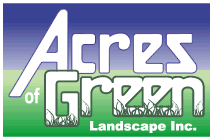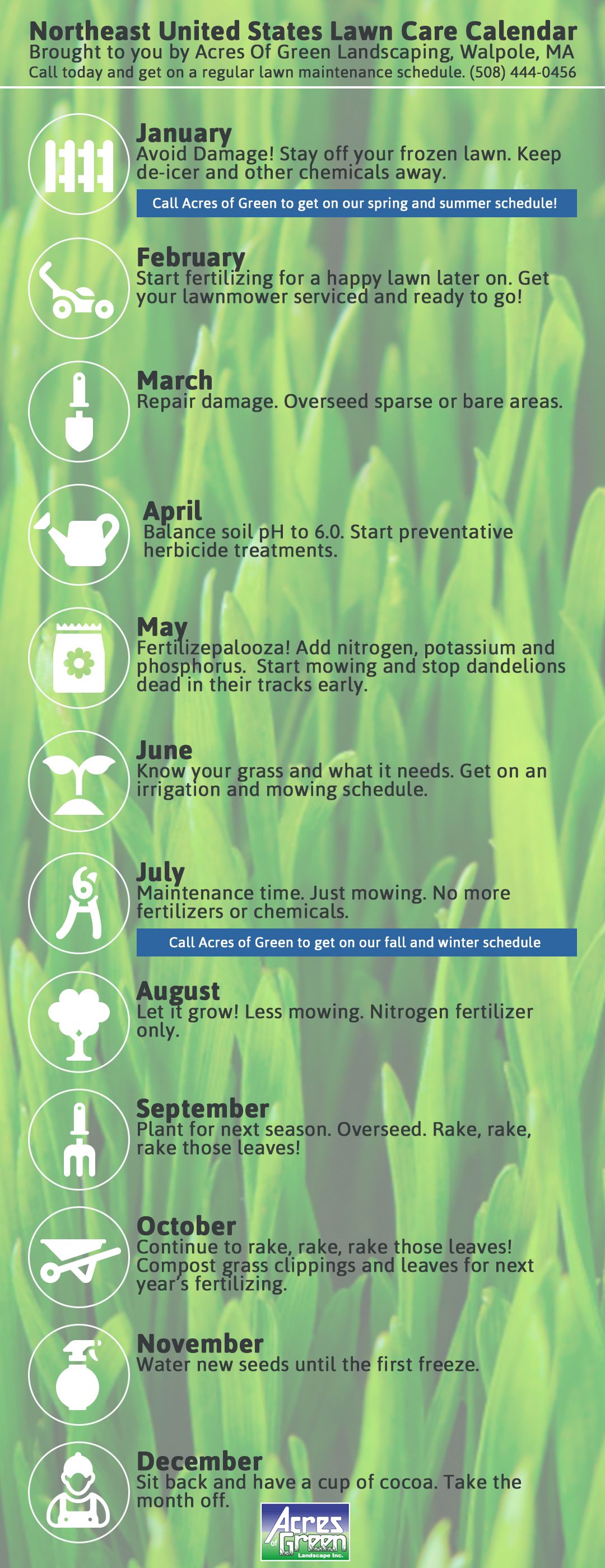Having a beautiful summertime lawn requires year-long effort. It is a lot of work, which is why so many of our clients are relieved that they can depend on Acres of Green to do the heavy lifting. It is easy to let your lawn care drop to the bottom of your to-do list. So, why not just let us take it off your list?
Professional Lawn Care
& Landscaping in Walpole, MA

Northeast Lawn Care Schedule
We’ve put together a handy month-to-month schedule for you to follow. If you want to do all of your lawn care on your own, this will help you stay on track.
January
The goal in January is just to not damage your lawn. Stay off it when it is frozen. Mark the edges so you don’t run the snowblower over it, and clear snow from walkways before adding any de-icer.
February
As the weather allows, start applying spring fertilizer. Now’s a good time to get all of your equipment, including your lawnmower, serviced.
March
Overseed to repair any damage done over the winter.
April
Check to make sure your soil pH hasn’t dropped below 6.0. If it has, add some lyme. Start preventative herbicide treatments — chemical or organic based.
May
May is a busy month. Start balancing your fertilizer with a good mixture of nitrogen, potassium and phosphorus. If you’ve done everything right, your lawn should be growing well now. Start mowing to promote new growth, but remember not to cut your lawn too short. You’ll also want to start combatting dandelions with a broadleaf weedkiller. If you don’t start now, you might lose control. Got grubs? Now’s the time to treat for those too.
June
Know your grass and establish an appropriate irrigation routine. Some cool season grasses don’t need a lot of water during this time, but will need to be mowed occasionally. The ideal mowing and watering schedule is highly dependent on the type of lawn you’ve got. So, if you’re not sure, hire a professional to help out.
July
Keep mowing when needed, never removing more than ⅓ of the blade. Try to avoid using fertilizers or weed control during this time. Your lawn is most likely already starting to go dormant, and you don’t want to damage it.
August
You’ll want to keep your lawn a bit fuller now. Keep your mower at the highest setting and just remove the tips of your lawn when you mow. Use nitrogen-only fertilizer if you need it. And, check to make sure there are no regulations related to the use of nitrogen fertilizer in your area. If there are, we can help with alternatives.
September
September is planting season. Overseed to grow new lawn either in patches, or for a whole new lawn. Rake, rake, rake. Don’t let layers of leaves accumulate.
October
Continue overseeing to repair any damaged areas. And rake, rake, rake. You can save all of your leaves and grass clippings in a compost pile to create your own fertilizer.
November
Water your new seeds. As soon as the first freeze arrives, stop. Mow only if and when your lawn looks like it needs it.
December
You’ve got a month off for the holidays. After you’ve drained gas from the mower and filled it with stabilizer, changed the oil and taken out the spark plugs, you can relax until the whole process starts up again in January.
Print out our handy guide below and hang it in the garage or near your gardening tools. It’ll help keep you on track. And, don’t forget to call to schedule regular lawncare.

